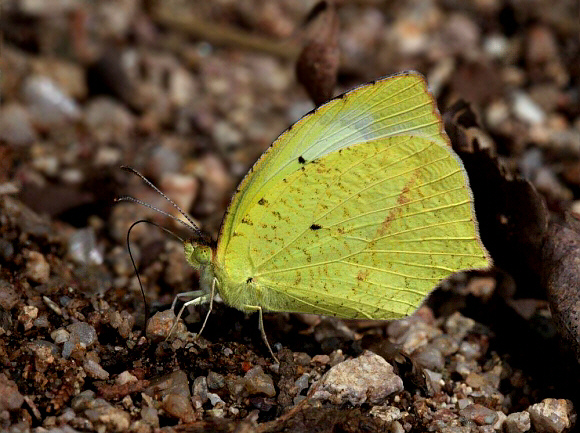
Introduction
The genus Eurema was until fairly recently represented in the neotropics by about 30 species, but several have now been reclassified as Pyrisitia, leaving a total of 19 currently recognised species in the neotropical region. Elsewhere in the world the genus has 9 species in Africa, 2 in Madagascar, and 9 in the Oriental and Australian regions.
These smallish butterflies are characterised by having yellow or white uppersides, with dark apical markings. The forewings have a strongly curved costa and a squarish apex. In most species the hindwings are rounded, but in salome, mexicana and arbela the termen is projected to a point.
The various species can be told apart by the pattern of mottled dark markings on the underside hindwings, and by the black borders on the upperside forewings, which differ according to species.
Eurema mexicana is distributed from the south-western states of the USA to Colombia.
Habitats
This species can be found in deciduous forest, acacia scrubland, and along roadsides and riverbanks at elevations between sea level and about 2000m.
Lifecycle
The egg is white and is laid singly on the upperside of leaves of the foodplants Diphysa, Cassia and Acacia (Fabaceae). The fully grown larva is yellowish-green, with has a broken red lateral line that is edged above and below with pale yellow. The pupa is yellowish-green. It is typical of Coliadinae, with an arched abdomen and large projecting wing-pads; and is attached by the cremaster and a silken girdle to a woody stem of the foodplant or nearby plant.
Adult behaviour
Males are usually found singly, or occasionally in two’s or three’s, when imbibing dissolved minerals from damp ground at the edge of ditches, runnels or roadside banks in forested areas. Females are more often seen nectaring at flowers along roadsides and riverbanks, or when exploring forest-edge habitats in search of egg-laying sites. The flight is fluttery but rapid.
